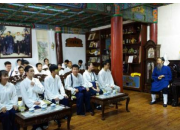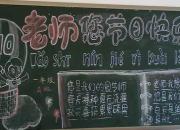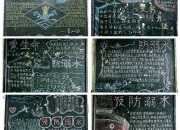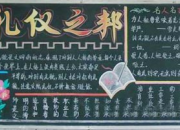初一英语语法总结
时间:2021-08-31初一英语语法总结(精选5篇)
总结是事后对某一时期、某一项目或某些工作进行回顾和分析,从而做出带有规律性的结论,他能够提升我们的书面表达能力,为此要我们写一份总结。我们该怎么去写总结呢?以下是小编整理的初一英语语法总结(精选5篇),欢迎大家借鉴与参考,希望对大家有所帮助。
初一英语语法总结1
一、 重点语法
1. 动词be(am,is,are)的用法:
be动词包括“am”, “is”, “are”三种形式。
①第一人称单数(I)配合am来用。句型解析析:I am+? 例句:I am Snoopy.
I am ten years old. I am a student. I am a boy.
②第二人称(You)配合are使用。句型解析:You are+? 例句:You are my good friend.
You are a good teacher. You are beautiful ③第三人称单数(He or She or It)配合is使用。句型解析:She(He, It) is +?? 例句:She is a good girl.
She is so tall. She is short. ④人称复数 (we /you/they)配合are使用。句型解析:We (You, They) are +?? 例句 We are in Class 5,Grade 7.
They are my friends. You are good students.
用法口诀:
我(I)用am, 你(you)用are,is跟着他(he),她(she),它(it)。单数名词用is,复数名词全用are。变否定,更容易,be后not加上去。变疑问,往前提,句末问号莫丢弃。还有一条须注意,句首大写莫忘记。
对应练习:
一. 用括号中适当的词填空。
1. I ________(am, are, is) from Australia. 2. She _______ (am, are, is) a student.
3. Jane and Tom _________(am, is, are) my friends. 4. My parents _______ (am, is, are) very busy every day.
5. _______ (Are, Is, Do, Does) there a Chinese school in New York? 6. _______ (Be, Are, Were, Was) they excited when he heard the news? 7. There _____ (be) some glasses on it.
8. If he _____ (be) free tomorrow, he will go with us. 一、用be 动词的适当形式填空
1. I ______ a boy. ______ you a boy? No, I _____ not.
2. The girl______ Jacks sister. 3. The dog _______ tall and fat.
4. The man with big eyes _______ a teacher. 5. ______ your brother in the classroom?
6. Where _____ your mother? She ______ at home. 7. How _______ your father?
8. Mike and Liu Tao ______ at school. 9. Whose dress ______ this? 10. Whose socks ______ they? 11. That ______ my red skirt. 12. Who ______ I?
13.The jeans ______ on the desk. 14.Here ______ a scarf for you.
15. Here ______ some sweaters for you. 16. The black gloves ______ for Su Yang. 17. This pair of gloves ______ for Yang Ling. 18. The two cups of milk _____ for me. 19. Some tea ______ in the glass.
20. Gao shans shirt _______ over there.
第二课时(1)英语人称代词和物主代词
一、人称代词
表示“我”、“你”、“他”、“她”、“它”、“我们”、“你们”、“他们”的词,叫做人称代词。人称代词有人称、数和格的变化,见下表:
人称代词主格:作主语,表示谁怎么样了、干什么了。
I am a teacher. You are student. He is a student, too. We/You/They are students.
人称代词宾格作宾语,表示动作行为的对象。 Give it to me. Let’s go (let’s =let us)
二、物主代词
表示所有关系的代词叫做物主代词,也可叫做代词所有格。物主代词分形容词性物主代词和名词性物主代词二种,其人称和数的变化见下表。
形容词性物主代词(my/your/his/her/its/our/their)+名词
而名词性物主代词则相当于形容词性物主代词+名词,故其后不必加名词。如: Is this your book?
No,,it isn’t, it’s hers(her book) This pen is mine.
代词练习(一)
一、选出括号中正确的词,在正确的词上打勾。
1. This is(my / I)mother. 2. Nice to meet (your / you). 3. (He / His)name is Mark. 4. What’s(she / her)name? 5. Excuse(me / my / I). 6. Are(your / you)Miss Li? 7. (I/ My)am Ben. 8. (She / Her)is my sister. 9. Fine , thank (your / you). 10. How old is (he / his)
二、用所给代词的正确形式填空。
1. These are ______ ( he ) brothers. 2. That is _______( she ) sister. 3. Lily is _______ ( Lucy ) sister.
4. Tom, this is _____ ( me ) cousin, Mary.
5. Now _____________(her parent) are in America.
6. Those __________ ( child ) are _____ ( I ) father’s students. 7. Do you know ______ ( it ) name?
8. Mike and Tom __________ ( be ) friends. 9. Thanks for helping ________( I ).
10. ______(Ann安)mother is ______(we) teacher.
三、单项选择。
( )1. My family ____ a big family. My family ____all here.
A. is, is B. are, are C. is, are D. are, is
( )2. This is __________.
A. a picture of family B. a picture of my family
C. a family’s picture D. a family of my picture
( )3. Let’s __________ good friends.
A. be B. are C. is D. am
( )4. Is she your aunt? Yes, __________.
A. she’s B. her is C. she is D. he is
( )5. Are __________ coats yours? Yes, they are .
A. they B. these C. this D. there
( )6. Is that __________ uncle? No, it isn’t
A. he B. she C. her D. hers
( )7. Mrs. Green is __________ grandmother. A. Jim and Kate B. Jim and Kate’s
C. Jim’s and Kate’s D. Jim and Kates’
( )8. Do you know the name _____Mr. Green’s son?
A. in B. of C. on D. or
( )9. __________ the great photo of your family. A. thank for B. Thanks for
C. Thank for D. thanks for
( )10. Are those your friends? __________. A. Yes, they’re B. No, they are
C. Yes, they are D. Yes, those are
代词练习(二)
一、用适当的代词填空
1.We like ________ (he, his , him) very much. 2.Is this guitar ________ (you, your, yours)? 3.________(She, Her, Hers) name is Li Li.
4.Father bought a desk for ________ (I, my, me, mine). 5.________ (It, Its, Its) is very cold today. 6.Is this your book, Mike?
Yes ,________(we, you, they )are. 7.Are you and Tom classmates? Yes, ________(we, you ,they )are.
8.Each of the students ________( have, has) a pen pal. 9.He has a dog. I want to have ________(it, one ),too. 10.Her parents are ________ (both, all ,either )teachers.
11.The text is easy for you .There are ________( few, a few ,little,
a little) new words in it .
12.I want ________( some, any) bananas. Give me these big ________
(one, ones).
二、选择正确的答案
1.Is this ________ book?
A.you B.I C.she D.your
2.Its a bird. ________ name is Polly.
A.Its B.Its C.His D.It
3.Whats that ?________ a jeep.
A.its B.Its C.Its D.its
4.Whats that in English? ________.
A.Its egg B.Thats egg C.Its a egg D.Its an egg
5.Whose cat is this ? Is it yours? Is it a white _______? A.cats B.one C.ones D.cats











